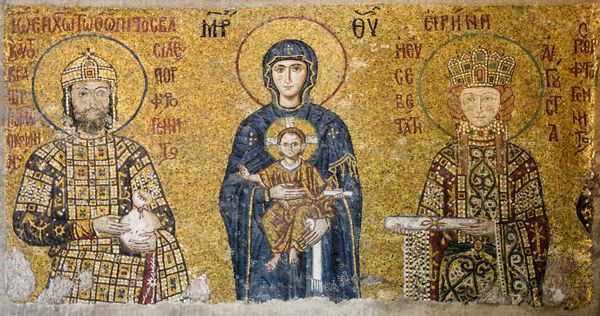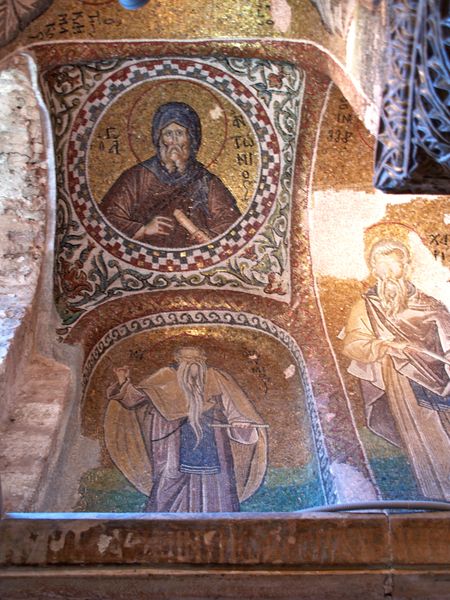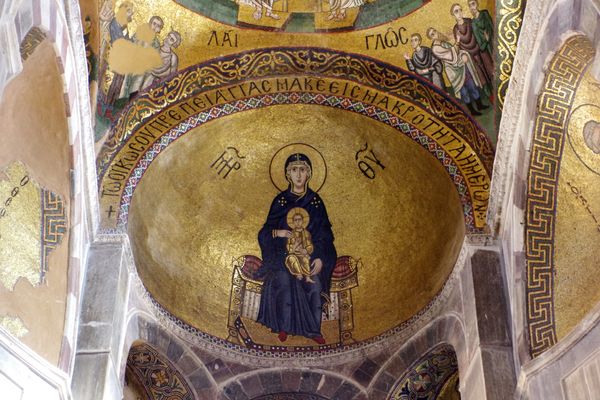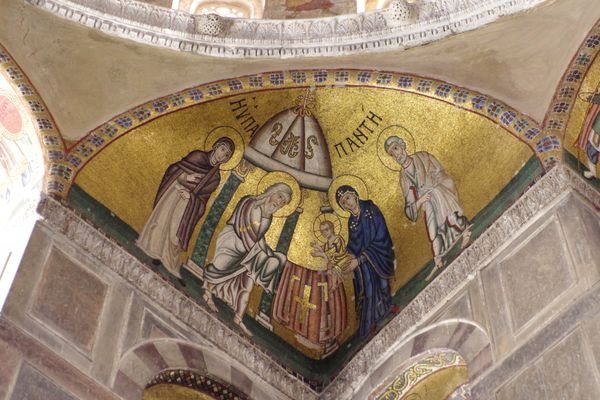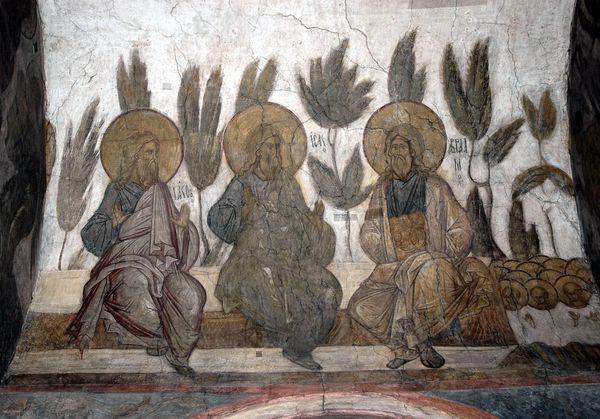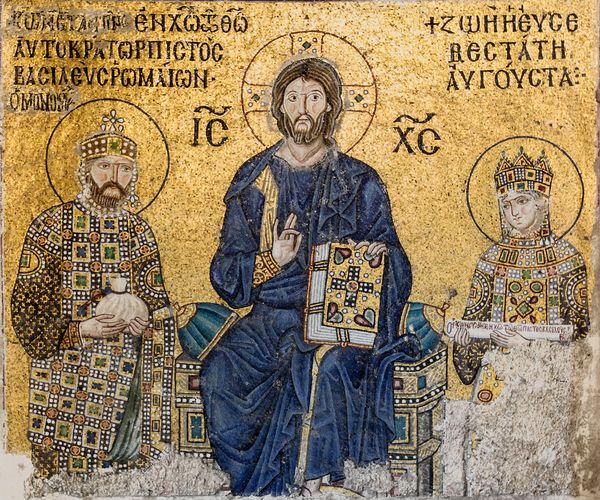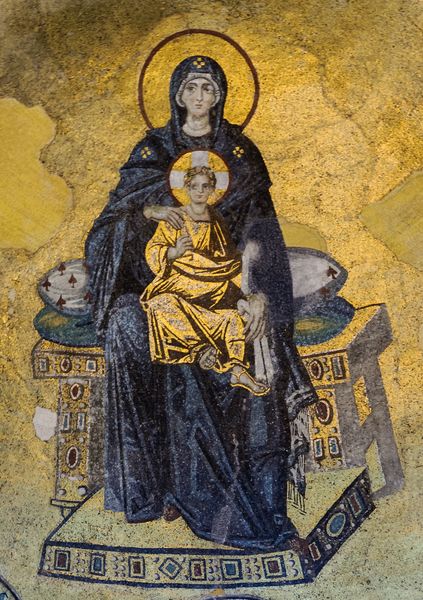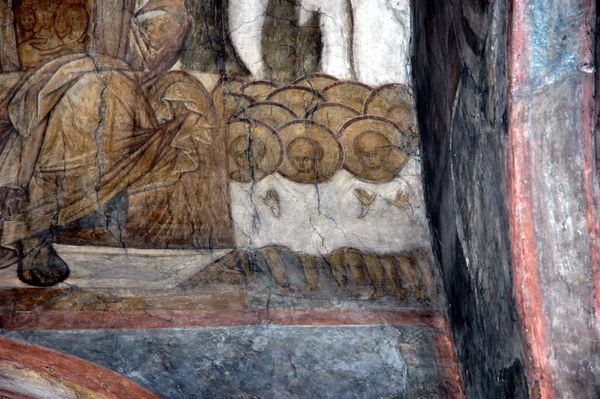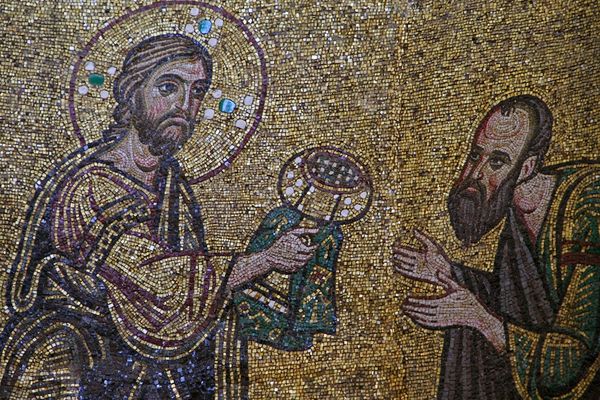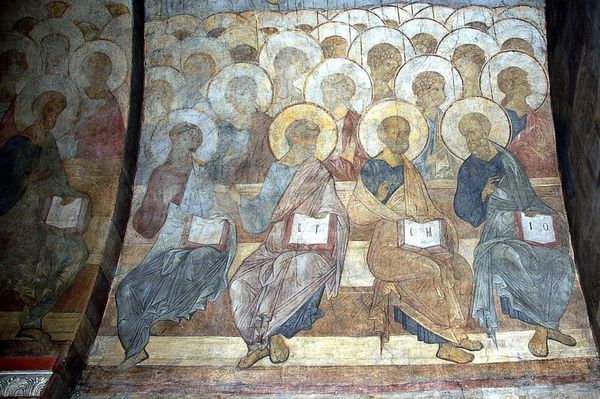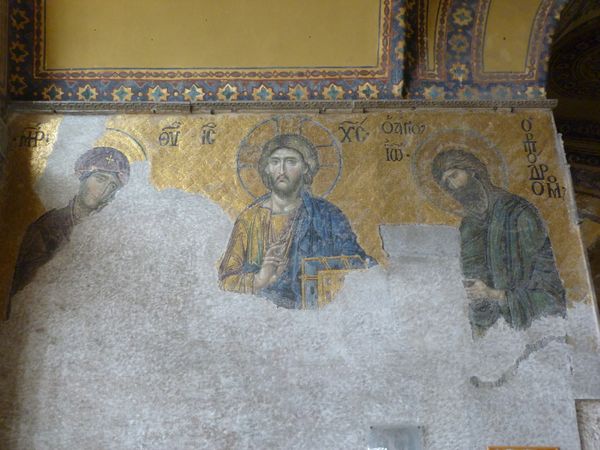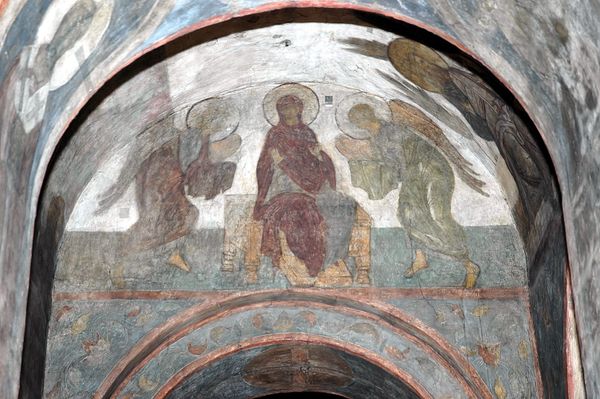
Mosaic Icon up to the Hagia Sophia Entrance 1000
0:00
0:00
byzantinemosaics
Hagia Sophia, Istanbul, Turkey
mosaic
#
mosaic
#
byzantine-art
#
figuration
Copyright: Public domain
Curator: As you enter the Hagia Sophia, look above the southwestern entrance to find this breathtaking mosaic dating back to around the year 1000. Editor: It strikes me immediately how grand and imposing it feels, despite being slightly damaged over the centuries. The sheer amount of shimmering gold is incredible. Curator: This work depicts the Virgin Mary holding the Christ Child, flanked by Emperor Justinian I on the left, and Constantine the Great on the right. What do you notice about their gestures? Editor: Both emperors are offering gifts. Justinian holds a model of the Hagia Sophia itself, and Constantine, a model of the city of Constantinople. This image resonates deeply as a visual statement of power dynamics between the church and the empire, no? The very architecture becomes a symbol of devotional and political agency. Curator: Precisely! Think about the context. The placement of the mosaic above the entrance makes it the first image one encounters upon entering, emphasizing the importance of imperial patronage in the church’s history. It portrays an intertwined power relationship where the empire’s legitimacy is linked to divine favor, and imperial contributions ensure the Church’s grandeur. Editor: The figures appear rigid, iconic, typical of Byzantine art, of course. Their gaze seems fixed, unyielding. It’s interesting to consider the impact on viewers of the time—were they meant to feel humbled, inspired, or perhaps even slightly intimidated by this display of religious and political might? I am reminded how such powerful images often helped consolidate power structures. Curator: Absolutely. Considering how the imagery was part of legitimizing power and shaping the viewers experience emphasizes that its socio-political function goes beyond artistic skill. And from that perspective, it is very accessible even today. Editor: It really prompts questions about art as an active agent in the drama of historical and cultural shifts. I feel this perspective transforms our understanding, highlighting power, belief, and collective identity, all within these carefully laid tesserae.
Comments
No comments
Be the first to comment and join the conversation on the ultimate creative platform.
